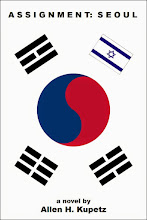WHEN South Korean celebrities, eager to prove their patriotism, swapped their German BMW cars for home-grown Hyundais on television, during the Asian financial crisis in 1998, they rallied the whole nation behind domestic products. To wean South Koreans off their Coke and Pepsi, a local firm launched “815 cola”, commemorating Korean liberation from Japan on August 15th 1945. American trainers were out, and hitherto uncool local brands were in. Hyundai’s financial arm created a “Buy Korea” fund, to get South Koreans to invest in local companies; and in its first three months it attracted more than 12 trillion won (then $10 billion).
However, such appeals to patriotism seem to have run their course, and South Koreans have rediscovered their fascination for all things foreign. What has prompted them to rethink is a growing awareness of how much more they pay for things than foreigners do—and not just because of high tariffs—and how easy it has become to import cheap stuff.
Take cars, for example: in September MotorGraph, a local trade magazine, conducted a poll of 1,800 South Koreans asking them why they hated Hyundai and its sister company, Kia. Almost half said they felt discriminated against in their home market. The Fair Trade Commission, a watchdog, is investigating a complaint from a parliamentarian that Hyundai is selling its new Genesis luxury saloon at a 13m-won markup at home compared with some export markets.
In 2013 Consumers Korea, a lobby group, surveyed how much 60 products cost in each of 15 rich countries. For more than half of them South Korea was in the top five priciest places. It was the third most expensive for Heineken beer, and the fifth for Chanel perfume. But most tellingly, all three South Korean products in the sample were more expensive in their home country than anywhere else.
South Koreans have been paying over the odds, especially for local goods, for decades. In the 1960s Park Chung-hee, a military strongman who oversaw an industrial boom, encouraged the overpricing of local products to subsidise exports, partly by sealing off the country to foreign brands. Even into the 1990s, buying Thai-made kitchenware or stationery from Japan (whose cultural products were banned in South Korea until 1998) was still considered a national betrayal.
Among the first signs that patriotic propaganda was losing its effectiveness came in 2009, when Apple launched the iPhone in South Korea. Samsung fought back by promoting its Omnia 2 mobile as “the pride of South Korea” and local media weighed in with negative reviews of its American rival. Yet Apple went on to seize a quarter of the country’s smartphone sales in one year. More recently, a petition by local grocers last March, calling for a boycott of popular Japanese-branded products, such as beer and cigarettes, flopped.
In the past three years South Korea has implemented a series of trade-liberalisation deals with 50-odd other countries (including the European Union’s member states). As a result of these, Koreans now have more choices than ever. In 2014, for the first time in many years, the value of imported European cars is thought to have exceeded the South Korean carmakers’ combined export earnings. One in ten locals now owns a foreign car, up from about one in 100 a decade ago.
Remarkably for a nation where anti-Japan sentiment runs high, Toyota’s Camry saloon won the
2013 Korea Car of the Year Award.
South Koreans have discovered that they can save a fortune by shopping on foreign websites. They are clicking away merrily on Amazon and a Chinese counterpart, Taobao, buying clothes, toys and electronic gadgets, including “Made in Korea” ones. The value of direct buying from overseas doubled to 1.1 trillion won between 2011 and 2013. In 2014 the government doubled the maximum value of goods that can be shipped tax-free into the country from America, to $200, giving direct foreign purchasing a further boost.
The government has recognised that exclusive distribution deals, in which a small number of retailers control all sales of a branded product within the country, are also inflating the prices of some foreign-made goods in local shops. To try to bring down the cost of living, it has simplified online payments and introduced a system in which the customs service authenticates copies of those products imported by other distributors, undermining the exclusivity agreements. That again is increasing the pressure on locally made goods and local retailers.
With more on offer, South Koreans now shop chiefly for value: they are picky, discerning and resent being duped, says Han Sanglin, a business professor at Hanyang University in Seoul. And they are not shy about expressing their views. A group of students recently rode a makeshift raft held afloat only with packets of Korean-branded crisps, in protest at their meagre contents. They derided the puffed-up, near-empty packs as “nitrogen snacks”.
South Korean firms argue that the products they sell to locals are often more sophisticated versions of those they export; and that their prices include delivery, installation and long warranties. But they are having to work harder to stop customers deserting them. Lotte, a big local retailer, will this year start opening a new type of outlet that sells foreign clothes at prices comparable with online shops’.
Having had an easy time in their home market for so long, many South Korean firms must now learn to be competitive. Jun Shin of the Seoul office of McKinsey, a consulting firm, says the country’s successful cosmetics firms are good role models: they have long offered high-quality products at modest prices, and as a result they have managed to keep their foreign rivals at bay.
◦
